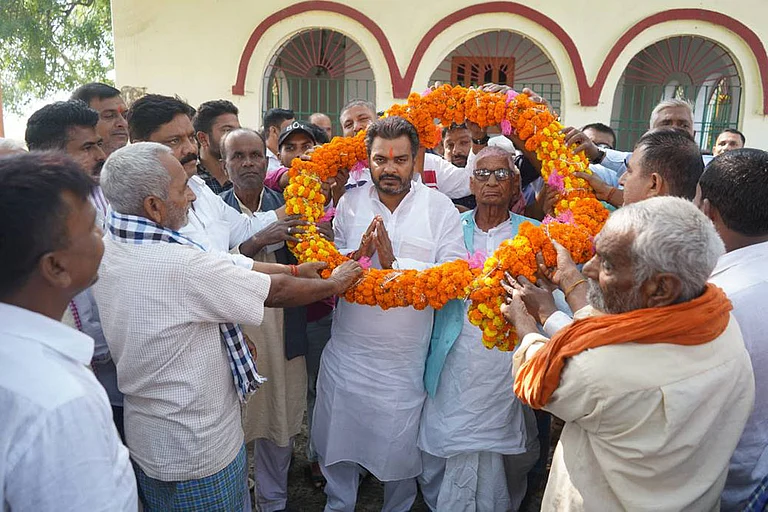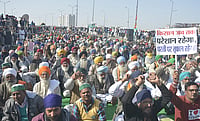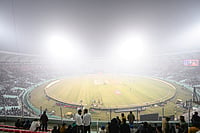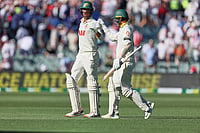After failing to ride the caste politics bandwagon twice earlier, Congress leader Rahul Gandhi is hoping to be third-time-lucky. With an eye on OBC votes, Gandhi has been leaving no stones unturned to project caste as one of Congress and INDIA bloc’s poll plank ahead of the 2024 Lok Sabha elections. If voted to power, Gandhi has promised to remove the 50 per cent ceiling on reservation instituted by the Supreme Court, and expand caste quotas.
Amid an ongoing hearing on sub-categorisation among SCs and simmering Maratha-OBC tensions in Maharashtra over Maratha reservation demands that have left the ruling Shiv Sena-NCP-BJP alliance government in a lurch, Congress is trying to slide into OBC votebank with its OBC outreach.
After targeting PM Narendra Modi over his OBC credentials, Rahul Gandhi announced that the INDIA bloc, if elected in the upcoming parliamentary elections, would conduct a nationwide caste census and expand caste-based reservations on the basis of its findings by removing the 50 per cent ceiling.
The 50 per cent ceiling on caste reservation was instituted by the Supreme Court in a landmark judgement in the Indra Sawhney case (1992) in which it held OBC reservations as constitutional but put certain conditions such as the 50 per cent cap.
While Gandhi and Congress are framing the expansion of caste reservation under their ‘jitni aabadi utna haq (rights as per your population)’ campaign, any move to expand quotas is almost certain to be challenged in the apex court. While announcing or enacting such expansion of quotas would be easy, the legal and constitutional scrutiny is not expected to be a cakewalk.
What’s Behind Rahul Gandhi’s Promise To Expand Quotas?
With an eye on the crucial 2024 Lok Sabha polls, caste census and the expansion of caste-based reservation are likely to play a central role in Congress and the INDIA bloc’s outreach to other backward classes (OBCs). In a throwback to era of ‘Mandal politics’, the INDIA bloc is mounting a caste mobilisation campaign and Congress does not wish to miss it this time as it did in the 1980s-90s.
In 1979, Prime Minister Morarji Desai of the Janata Party appointed the Second Backward Class Commission, which was headed by former Bihar Chief Minister Bindeshwari Prasad Mandal. It came to be known as the Mandal Commission. It submitted its report in 1980 and recommended the reservation for the OBCs. It was not until 1990 that Vishwanath Pratap Singh of the Janata Dal-led government implemented the recommendation.
As both the appointment of the Mandal Commission and the implementation of its recommendation happened under non-Congress governments, Congress could not reap any benefit from the rise of the Mandal politics. It also marked the beginning of the decline of Congress in electorally significant UP and Bihar.
With the BJP riding the high of its "ideological" successes like the abrogation of Article 370 and inauguration of the Ram Mandir in Ayodhya, Congress' best bet to offset the saffron edge is to focus on caste politics and OBCs.
By promising caste census and expanding caste quotas, the party seems to be directly wooing OBC voters, a majority of whom at present support the BJP and are key to its success.
A veteran Congressman from Uttar Pradesh’s Meerut tells Outlook that while Congress projected its ‘rainbow coalition’ image for decades, it retained an essentially centrist core which rendered it incompatible with the polarised politics of Mandal and Kamandal. (Mandal refers to the caste and reservation based politics let by social justice-based parties while Kamandal refers to the surge in Hindutva politics amid the Ram Janmabhoomi movement helmed by BJP and the Sangh Parivar in 1980-90s.)
“The Mandal-Kamandal phase polarised the North Indian polity, at least in UP and Bihar, and the Congress with its centrist ideology could not keep up. It was too extreme for us. Caste and religion became the two poles of political polarisation and we were engaged in neither. That caused our decline,” the senior Congress leader says on condition of anonymity.
The Congress also needs to urgently broaden its base on social base where the BJP already enjoys a stronghold.
The extended right-wing Hindutva ecosystem that works to promote BJP officially and unofficially has been expanding its initially Hindu upper-caste support base to include marginalised sections. The party's increasing popularity among Dalit and tribal voters is the culmination of decades of footwork by the Sangh Parivar.
In his book ‘Republic of Hindutva’, Badri Narayan notes that “subsuming of caste identity into a larger religious framework and the promotion of a Hindu community with shared interests that rises above caste considerations” is key to the proliferation of BJP among populations that have traditionally faced oppression at the hands of religious majorities. To counter BJP's religious majoritarianism, it is imperative for Congress to mount a caste-based mobilisation, pitting caste against Hindutva.
Why Is There 50% Ceiling On Reservation, What Is Its Origin?
The 50 per cent ceiling on caste reservation comes from the Supreme Court’s judgement in the ‘Indra Sawhney vs Union of India’ (1992) case.
In the landmark judgement, the Apex Court held the OBC reservation instituted by the Vishwanath Pratap Singh-led Union government in 1990 as constitutional but set certain conditions. One of those was to cap the reservation limit at 50 per cent.
Additionally, the Supreme Court also instituted the concept of ‘creamy layer’ among the OBCs, based on their income, and said this category would not be eligible for reservation. Moreover, the SC also ruled that reservation would only apply to the initial appointment to government jobs and not to subsequent promotions — this was overturned later through a constitutional amendment.
In instituting the 50 per cent ceiling, the nine-judge Supreme Court bench dove into constitutional interpretations. The stance echoed the view expressed by Bhim Rao Ambedkar, the Chairman of the Drafting Committee of the Constituent Assembly (CA), in the CA debates. On November 30, 1948, Ambedkar said that reservations “must be confined to a minority of seats”.
“Supposing, for instance, reservations were made for a community or a collection of communities, the total of which came to something like 70 per cent of the total posts under the state and only 30 per cent are retained as the unreserved. Could anybody say that the reservation of 30 per cent as open to general competition would be satisfactory from the point of view of giving effect to the first principle, namely, that there shall be equality of opportunity? It cannot be in my judgment,” said Ambedkar.
Citing Ambedkar, the 6:3 majority of the Indra Sawhney case ruled: “It is relevant to point out that Dr Ambedkar himself contemplated reservation being ‘confined to a minority of seats’. No other member of the Constituent Assembly suggested otherwise. It is, thus clear that reservation of a majority of seats was never envisaged by the founding fathers. Nor are we satisfied that the present context requires us to depart from that concept.”
The Supreme Court, however, did not make the 50 per cent ceiling ironclad. It said that the ceiling may be crossed in “certain extraordinary situations” but “extreme caution” has to be applied in such special cases. The SC ruled: “It might happen that in far-flung and remote areas the population inhabiting those areas might, on account of their being out of the main stream of national life and in view of conditions peculiar to and characteristical to them, need to be treated in a different way, some relaxation in this strict rule may become imperative. In doing so, extreme caution is to be exercised and a special case made out.”
While the Indra Sawhney judgement (1992) cemented the 50 per cent ceiling, it was first referred to in the Supreme Court’s ‘MR Balaji vs State of Mysore’ judgement (1963). In a case involving the then-Mysore state’s 68 per cent reservation, the SC introduced the concept of “reasonable limits” on the reservation and ruled that the state’s service to the historically disadvantaged cannot bypass the interests of the general society.
“The interests of weaker sections of society, which are a first charge on the states and the Centre, have to be adjusted with the interests of the community as a whole. Speaking generally and in a broad way, a special provision should be less than 50 per cent. The actual percentage must depend upon the relevant prevailing circumstances in each case,” ruled the Apex Court.
While both the MR Balaji (1963) and Indra Sawhney (1992) judgements said that the 50 per cent ceiling is not etched in stone, it was the ‘M Nagaraj & Others vs Union of India & Others’ (2006) that laid down the criteria for bypassing the 50 per cent ceiling.
In the M Nagaraj case, the SC ruled that “objective and quantifiable data” is required to prove that a community is backward and crossing the 50 per cent ceiling is required. This forms the basis for the Congress party and the INDIA bloc’s call for a caste census.
Legal Questions Over Crossing 50% Reservation Cap
While the Indra Sawhney judgement (1992) leaves room for crossing the 50 per cent ceiling on reservations in certain cases and the M Nagaraj verdict (2006) lays down the criteria —objective and quantifiable data to show a community’s backwardness— for the ceiling to be crossed, Congress and Rahul Gandhi’s promise of ‘jitni abadi utna haq (your rights as per your population)’ may not be perfectly compatible with judicial precedents and the Constitution.
Article 16 (4) of the Constitution of India says that the state may have reservations for those classes “not adequately represented” in government services. The Constitution does not mention proportional representation which Rahul and Congress are seeking. The Indra Sawhney judgement also mentioned this and said: “We must, however, point out that Clause (4) speaks of adequate representation and not proportionate representation. Adequate representation cannot be read as proportionate representation.”
To bypass this, a government may use the exceptions mentioned in the Indra Sawhney judgement, but then that would put the very idea of reservation under question, says legal expert Vinod Shankar Mishra.
In the Indra Sawhney judgement, the SC ruled that the 50 per cent ceiling may be crossed in “certain extraordinary situations”, such as to benefit the people in “far-flung and remote areas”. Mishra says this was a reference to tribal and ethnic groups in the Northeast or remote Himalayan heights who may need upliftment via reservation because of being historically distant from education and developmental opportunities.
“The Indra Sawhney judgement’s exception does not refer to caste-based reservation. In a liberal interpretation of the judgement, one may understand ‘certain extraordinary situations’ to mean a linguistic or an ethnic group, but that would go against the idea of reservation itself, which was always meant to be a tool of affirmative action for social groups that have been historically marginalised because of the caste system or being on the margins of society, such as the Adivasis. It was not based on criteria of religion, language, or even economic status,” says Mishra, Professor, Faculty of Law, Banaras Hindu University (BHU).
Mishra says that the notion of providing reservations in proportion to a group's population might contradict constitutional principles. “The Constitution mandates adequate affirmative action, not necessarily proportional to population size. This implies a need to refine the approach to reservations, focusing on ensuring adequate representation and addressing historical injustices rather than strict proportionality,” says Mishra. All scholars, however, don’t agree with this. A legal scholar with specialisation in matters around affirmative action tells Outlook that the reservation for scheduled castes (SCs) and scheduled tribes (STs) was fixed as per their share in the population as the share was known.
“The reservation for SCs and STs was proportionate to their census numbers. Since there were no contemporary census figures for OBCs, the OBC reservation had to be made such that it fell under the 50 per cent ceiling. In the absence of any caste census, there were no OBC numbers and hence no case of proportionate representation was made for them,” says this scholar, requesting anonymity to speak freely.
There has been another criticism of the Supreme Court, with some scholars saying that while the Apex Court mandates objective and quantifiable data to cross the 50 per cent cap, the court itself did not cite any such data while setting the cap. In a paper in ‘Economic and Political Weekly’, Alok Prasanna termed the cap an “artificial limit” and noted that it was “pragmatic rather than principled”. He further said the SC judgement in the EWS reservation case (2022) also strengthened the case for scrutiny of the cap and state-level reservations over 50 per cent.







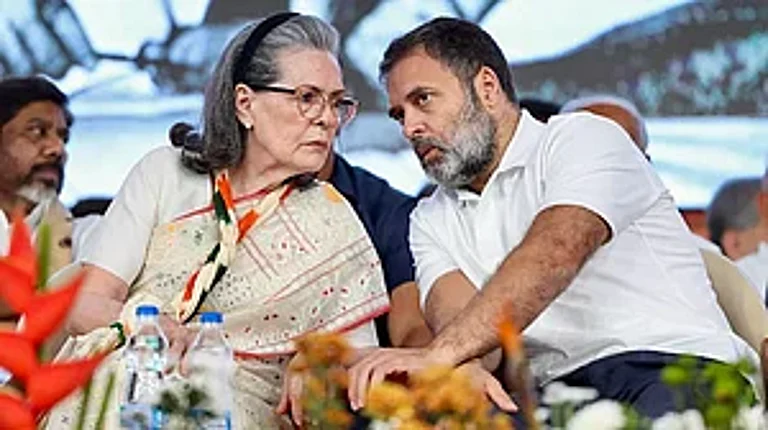
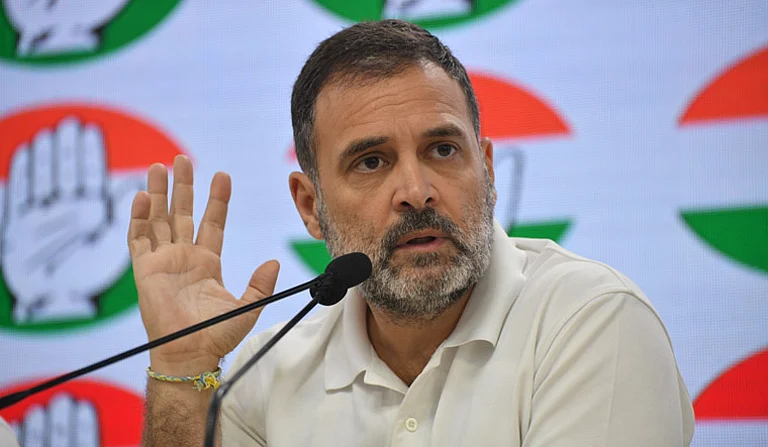
.jpg?auto=format%2Ccompress&fit=max&format=webp&w=768&dpr=1.0)
